| 1 | An icon of fear |
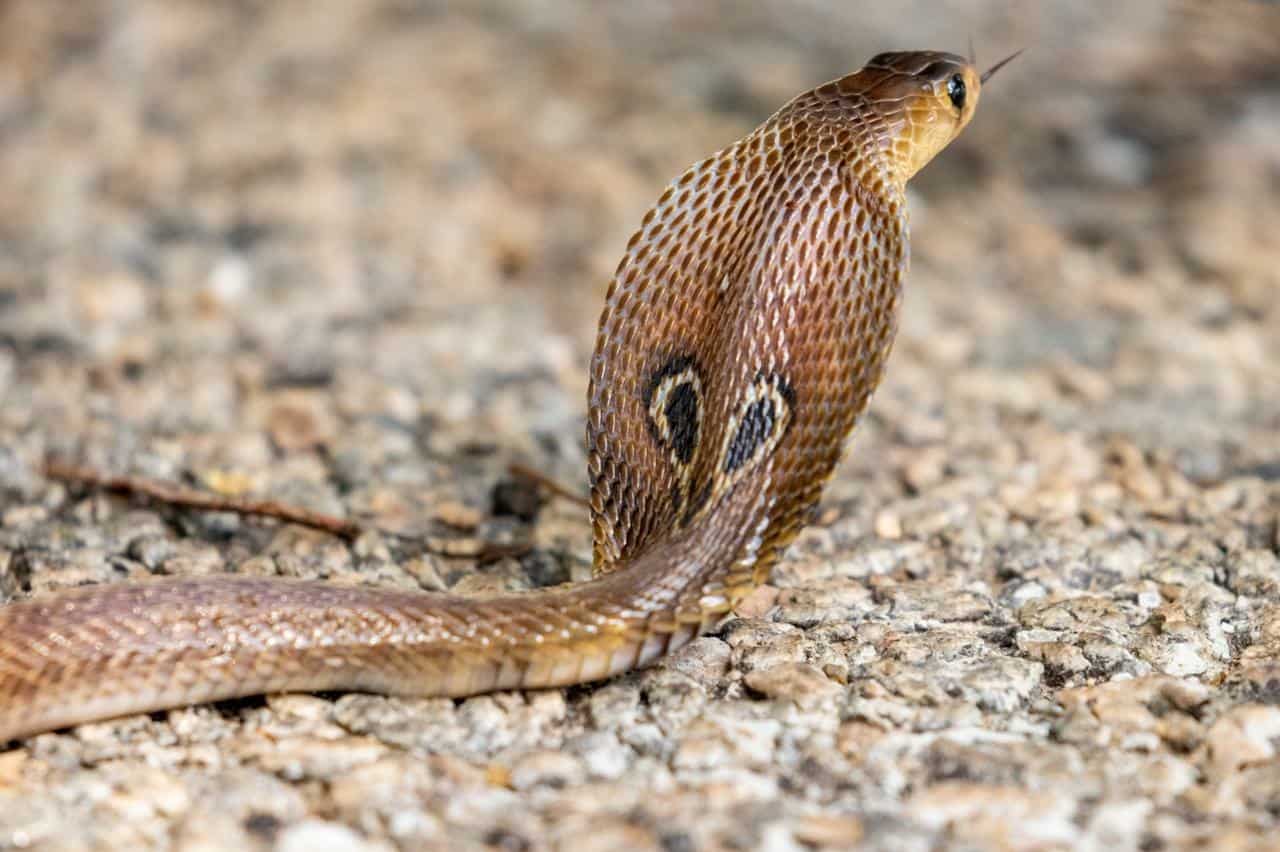
The Indian big 4 is the lethal club featuring the country’s four most dangerous snakes according to annual death count. They are the Russell’s viper (farms), saw-scaled viper (arid places), Indian krait (most places), and last but not least, the Indian cobra, one of the most iconic species on Earth.
The Indian cobra is a member of the true cobra genus of Naja, which has over 30 members. As they were the first ever cobra to be officially described by science, their Latin name is simply Naja naja. Indian cobras inhabit the entirety of India except for the far north, avoiding the Himalayan foothills, which are far too frosty. They also avoid true deserts and thick rainforests, but any other habitat is fair game for them.
Indian cobras slither at high speeds through forests, grasslands, farmland, dusty villages and shrubland alike. They rarely enter houses themselves, but are common in back gardens. They’re also common in Sri Lanka, Bangladesh, Pakistan and southern Nepal.
Indian cobras have dozens of local names, including Gohkra, Pehtigom and Naag. Equally as many legends surround them, such as mating with ratsnakes, growing beards as they enter old age, or vengefully hunting you down to the ends of the Earth if you dare to kill their mate.
| 2 | Rapidly-acting venom |
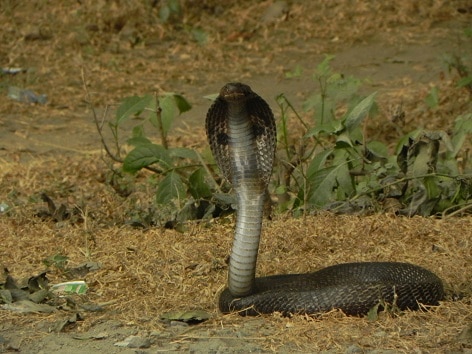
There are some severely venomous snakes which are shy, and will stay peaceful as long as you walk straight past the leaves they’re hiding under (particularly coral snakes). The Indian cobra is quite simply one of the worst snakes in the world to come face to face with.
Indian cobra bites can be summarised like this: a rapidly swelling bite mark and limb, followed by paralysis of most body parts. Lung failure is the hallmark of an Indian cobra bite, beginning with trouble breathing, and progressing to total brain signal failure, requiring artificial ventilation. The Indian saw-scaled viper, meanwhile, tends to kill through kidney failure. Victims of Indian cobras are often dead before they even reach hospital.
The first symptoms begin 8 minutes after bite, possibly less. Swelling kicks in first, but reports consistently find that the earliest systemic symptom is drowsiness, which arrives within 30 minutes. Then come minor neurotoxic effects, such as blurred vision, immobile eye muscles, ptosis (drooping eyelids) and a stiff jaw. There’s predictable symptoms such as headache, nausea, vomiting and dizziness. The venom also contains hyaluronidase, which dissolves the structural component hyaluronic acid in skin, allowing the venom to spread faster.
| 3 | Not the deadliest, but close |
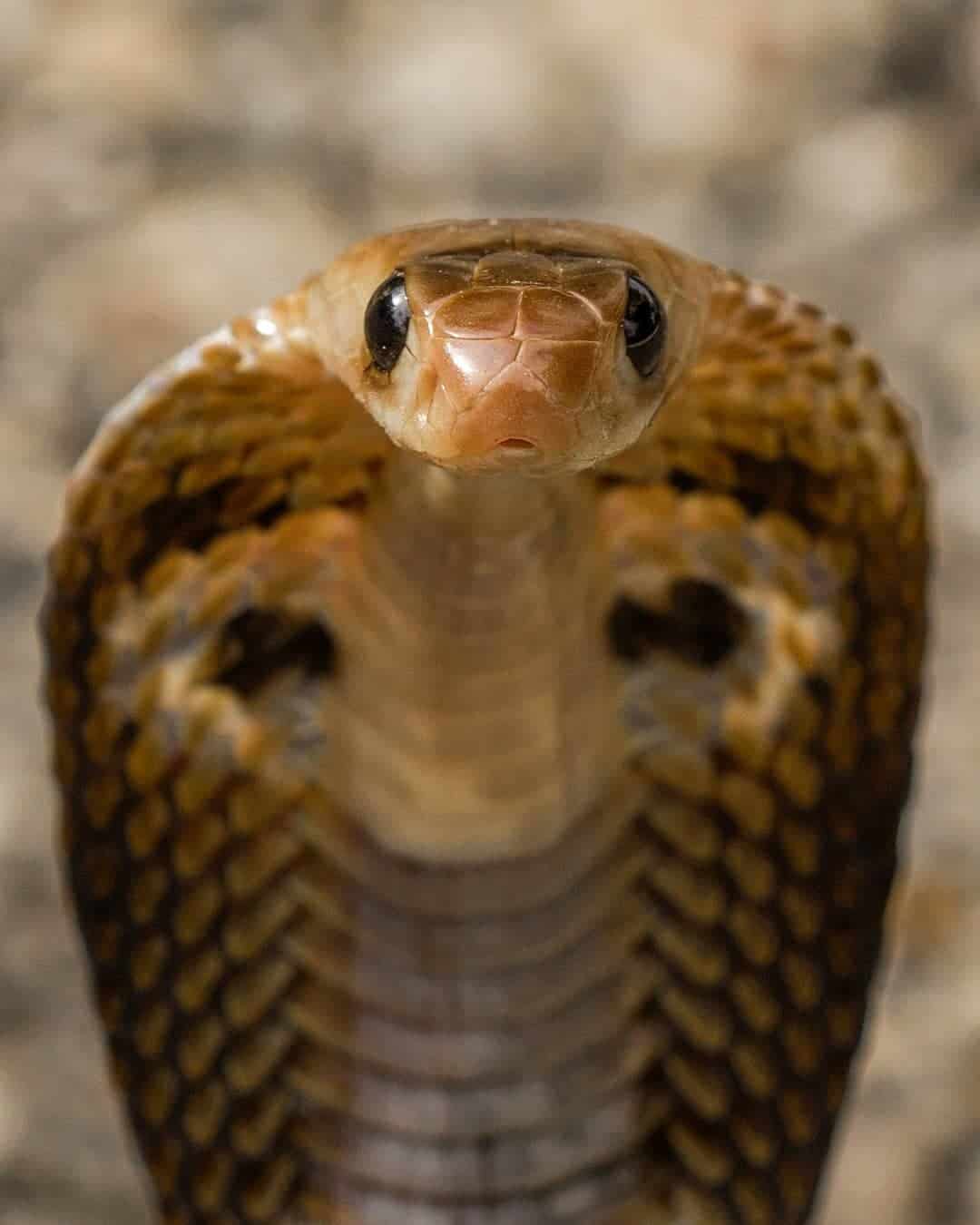
They’re not quite basilisks, but fear of Indian cobras is so ingrained in Indian culture that people have heart attacks and die after seeing a hooded cobra resting by a road. Their official LD50 toxicity rating is 0.45mg, making it the least deadly per drop of the big 4. But its venom yield is the highest, routinely injecting 250mg per bite, and occasionally up to 600mg.
Additionally, its venom potency varies by region. In Pakistan, the LD50 rating can be 0.22mg, while in parts of India it can be just 0.84mg (which is still deadlier than cottonmouths). The Russell’s viper, saw-scaled viper, and Indian krait score 0.40mg, 0.024mg, and 0.09mg respectively.
Indian cobras also produce a feeling of intoxication, sort of like alcohol, but less pleasant. Some Indians have even abused the venom as a natural high (see here), aided by snake charmers, after growing bored with the usual opioids and cannabis.
| 4 | Targets brain and skin |
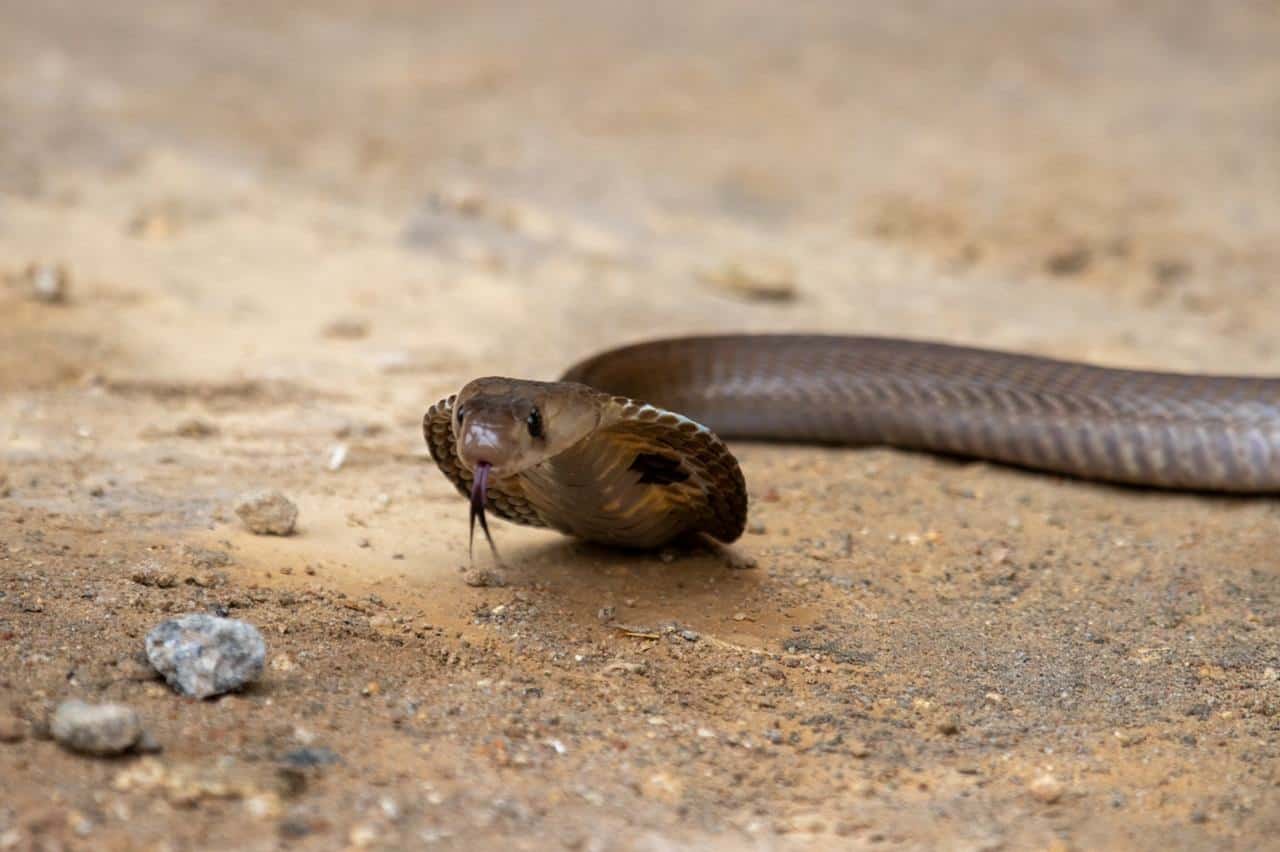
As well as swelling, Indian cobras cause necrosis, where the tissue starts to rot and darken, accompanied by a putrid smell. Indian cobra bites are extremely painful, whereas the Indian krait is also neurotoxic, yet more mildly painful. If you survive the wave of paralysis, then victims often require skin grafts or even amputation. It’s extremely rare for Indian cobras to deliver a dry bite, a misfire where no venom is injected.
Another neurological symptom is the “broken neck”, when the victim loses control of the neck muscle, so that the head lolls strangely at angles with no control.
The one sunny side amidst this diary of horror is that Indian cobra bites are reasonably easy to treat with antivenom. Their neurotoxins are post-synaptic, blocking neuroreceptors in muscles. Anticholinesterase drugs can undo their effects, whereas the Indian krait has pre-synaptic neurotoxins which physically degrade nerve endings, which still has no decent cure. With proper medical care, only 9% of Indian cobra bites are fatal.
| 5 | Annual bite statistics |
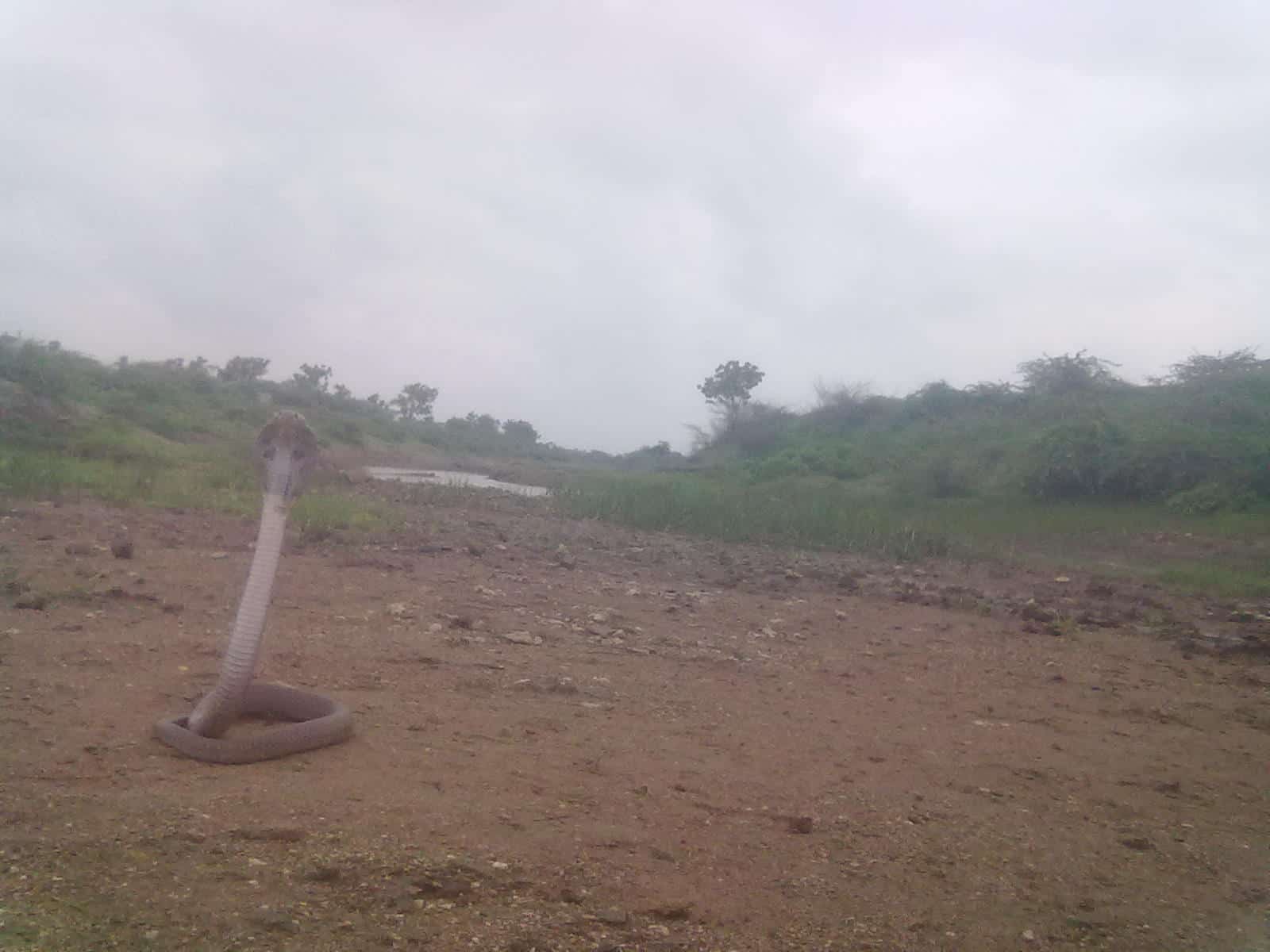
Indian cobras average at 1.5-1.8 metres long, occasionally reaching 2.2 metres in Sri Lanka, where they tend to be longer. They don’t have a bloodthirsty desire to kill, as an Indian cobra’s first response is to retreat. Nevertheless, raising their chest and rearing their hood in the classic cobra style is their second option, and not far behind in preference.
One study analysed 633 snakebites in a hospital in Maharashtra, central western India. Just over two thirds were venomous, and of those, the Indian cobra made up 16.6%, with the saw-scaled viper at 64.2% and Russell’s viper at 9.4%.
Another study combined 5 different districts of rural Maharashtra, encompassing 182 snakebite victims. The Indian cobra came third among the big 4, but by a small margin, accounting for 22.5% of bites. Russell’s’ vipers caused 20.8% of bites, saw-scaled vipers 30.2% and Indian kraits 26.3%.
It varies by region, as in Tamil Nadu state (far south), the Indian cobra was ranked second for bites behind the Russell’s viper, but in the eastern state of Jharkhand, they only caused 3.1% of bites.
| 6 | Hotspots of the Indian cobra |
Most Indian cobra victims are bitten during the daytime, and the situations vary. Some villagers are bitten when harvesting crops or reaching into piles of straw, but others are bitten during face to face meetings, where the Indian cobra strikes after mistaking a moving limb for prey.
In November 2022, 12 year old Deepak Ram refused to give up when nature marked him for death. An Indian cobra bit him on the hand while he played in the backyard, and refused to budge when he shook it vigorously. Indian cobras have a tendency to hang onto their victims, and so, without hesitating, the boy turned the tables and bit the cobra, not once but twice. With venom flooding through his veins, and toxins already attaching to microscopic muscle receptors, Ram was rushed to hospital, but survived with a dose of antivenom. The incident happened in Jashpur District in central Chhattisgarh, eastern India, known as realm of the serpents for its high abundance of venomous killers.
This story seems to pop up every few years; farmer Mohammed Salmodin was another bite-back practitioner back in 2012.
| 7 | The spectacle marking |
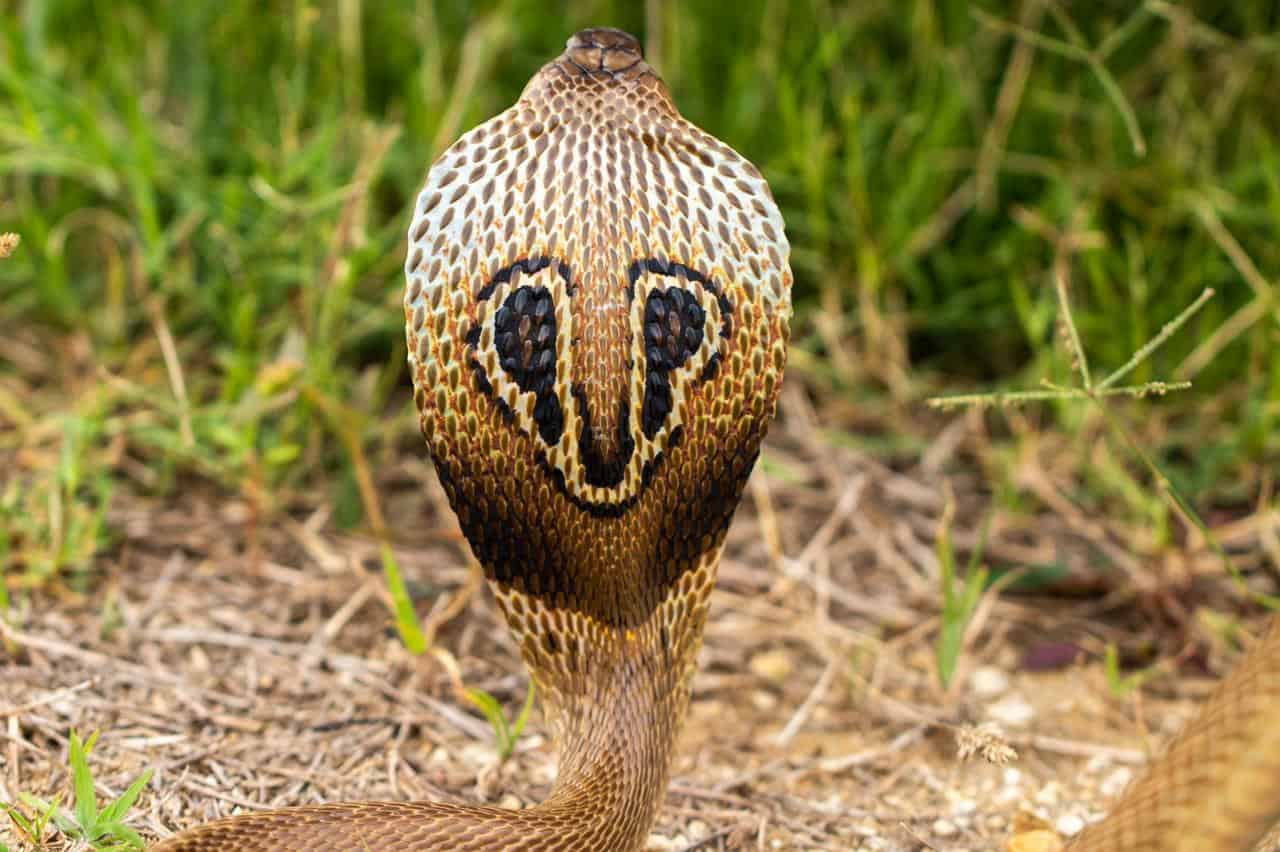
Like most Asian cobras, Naja naja has a distinctive symbol on the back of its hood. The shape is unique to this species, two large circles joined to a curving line, often to create a silly, smiling face. The goal is tricking predators into thinking their creeping approach has been spotted, and giving up.
Sri Lankan Buddhists believe that the marking represents two of Buddha’s fingers, gifted to the cobra after it sheltered him from rain once. The monocled cobra of Thailand has something similar, except that the hood marking is perfectly round, which was supposedly imprinted by Buddha’s thumb. Indian cobras are also clearly different from the Chinese cobra, whose marking looks more like a bat symbol.
The spectacle marking is almost always present, but Indian cobras vary in colour. In Sri Lanka, they’re banded, while in most of India they’re a consistent brown. In Nepal and Pakistan, on the outermost reaches, they can be fully black, meaning that the spectacle marking is absorbed into nothingness.
| 8 | Tales from the undergrowth |
The Indian cobra has a very generalist diet. Two species they eat are the common black rat, which has conquered most of the Earth, and the Indian palm squirrel, which is also hunted by Russell’s vipers. Indian flying foxes are on the menu, one of the world’s largest bats, with a wingspan of 1.5 metres.
Then there’s other snakes. An Indian cobra once regurgitated a 0.5 metre Russell’s viper, its big 4 compatriot. Perhaps the venom was too much, or perhaps it was a regular meal and the scientists had spooked it. They’ve also been witnessed eating Bhupathy’s shieldtail snakes, oriental ratsnakes, the babies of Burmese pythons, and a sharp-nosed vinesnake 1.5 metres long (with the cobra being two metres).
One weird tale happened in Maharashtra state, India, when a scientist was summoned to witness two banded racers (Platyceps plinii) duelling in a forest. He expected to see two males fighting for breeding rights, but when he arrived, the scene had changed. One banded racer was cowering under tin sheet metal, while the other was firmly in the jaws of an Indian cobra. The venomous killer spent two hours rearranging its prey, before swallowing headfirst and retreating to a rock wall.
| 9 | A strong swimmer |
Indian cobras are often found near water, and are strong swimmers. In 2011, researchers were visiting a rice paddy in Tapil Nadu, India, when a local girl drew them over to a well. Inside was an Indian cobra, which had been stranded on the water surface for 5 days.
According to the villagers, it had made several desperate attempts to free itself, but slid back down the stone walls each time. A snake catcher stepped in, but this only caused the cobra to dive below the water surface. It stayed below for 20 minutes, surfaced to breathe for 2 minutes, and then vanished for another 20 minutes. Then it re-emerged, and searched in vain for a hollow to rest in.
The fearful villagers were desperate to use the well, and so the researchers finally scooped the cobra out, finding it to be perfectly healthy and measuring 1.37 metres. Indian cobras are far from aquatic and lack the advanced physiology of the northern watersnake, but their ability to hold their breath underwater far outstrips our own.
| 10 | Other cobras in India |

Ignoring the king cobra, which isn’t a true cobra, India has 4 cobra species. The other three are…
Monocled cobra – Thailand’s main cobra, which also stretches to northeast India.
Caspian cobra – mainly inhabits Iran and the middle east, but also spreads to northwest India.
Andaman cobra – not found on the Indian mainland. Lives on the Andaman Islands, an Indian territory which is actually closer to Burma and Thailand geographically.
For the vast majority of India, Naja naja is the sole cobra species. Decades ago, many cobras in southeast Asia were filed under the Indian cobra umbrella as subspecies, including the monocled, Javan spitting, and Chinese cobras. As the years go by, geneticists are delving deeper and deeper into the DNA chasms that separate them.
The Indian cobra lays an average of 10-24 eggs. In 2021, a new record was set, as an Indian cobra was found sitting on 45 small white eggs, on a pile of bricks near a house. The eggs themselves are a snowy white colour, and slightly more elongated than a chicken egg.
